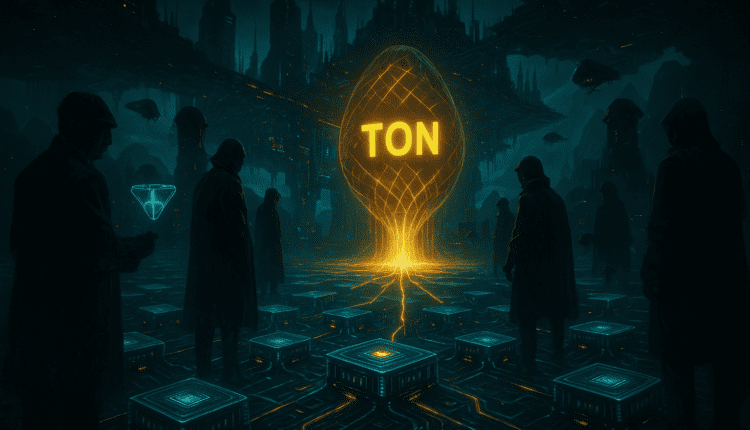Cocoon Decentralized AI Network Faces Regulatory, Security, and Adoption Headwinds — What to Watch

As TON prepares to launch Cocoon — its decentralized confidential compute network — questions arise around regulation, security, and real-world adoption.
Regulatory Headwinds: Decentralization Meets AI Oversight
Pavel Durov upcoming Cocoon initiative has drawn industry-wide interest for merging blockchain with artificial intelligence, but it also lands squarely in the crosshairs of global regulation.
By enabling private AI workloads to run on decentralized GPU networks, Cocoon challenges long-standing assumptions about data sovereignty and accountability.
Online advertising service 1lx.online
In an era when governments are drafting AI safety frameworks, decentralizing compute could complicate enforcement.
Tasks processed in “confidential compute enclaves” — encrypted environments that obscure data and execution — might limit the ability of regulators to audit AI behavior, especially in cases involving sensitive or cross-border datasets.
“Confidential computing is powerful but politically fragile,” one analyst noted. “The EU and U.S. regulators want traceability in AI systems — Cocoon’s privacy layer makes that harder, not easier.”
As we reported earlier in How Cocoon plans to pay GPU-owners in crypto, the network’s incentive structure depends heavily on open participation from GPU providers — which could expose it to jurisdictional and compliance conflicts as operators span multiple regions.
Security and Confidentiality: The Double-Edged Sword
Cocoon’s defining feature — confidential compute — ensures encrypted data processing, preventing node operators from accessing user models or training sets.
However, this very design introduces a paradox: the more private the system, the harder it is to supervise.
If exploited, malicious actors could theoretically run unauthorized AI code, such as deepfake generators or privacy-invasive tools, under the guise of encrypted workloads.
TON developers claim Cocoon will use zero-knowledge proofs to confirm computational integrity without exposing data, but implementation at scale remains unproven.
“The challenge isn’t just encryption — it’s verification,” said a cybersecurity researcher familiar with decentralized compute projects. “How do you guarantee safety when no one can see what’s inside the box?”
This risk is not theoretical. Similar debates arose around Bittensor’s AI model training nodes and Render’s decentralized GPU render farms, both of which faced oversight questions in 2024. Cocoon will need to demonstrate technical maturity — not just ideology — to earn institutional trust.
Adoption Challenges: Trust, Economics, and Competition
Online advertising service 1lx.online
The broader question remains: will developers trust a new decentralized network for critical AI workloads?
While Cocoon’s integration into Telegram’s vast ecosystem gives it visibility, enterprise-level adoption depends on reliability and cost efficiency. Competing against industry giants like AWS, Google Cloud, and NVIDIA DGX Cloud, TON must prove that its model is not only cheaper, but also safer and more transparent.
Hardware economics also pose challenges. GPU-owners face rising electricity costs, hardware depreciation, and token volatility.
As discussed in Durov sets November launch for Cocoon, early enthusiasm may fade if compute demand or token yield fails to offset costs — a familiar pattern seen in early decentralized storage and mining networks.
At launch, Cocoon’s sustainability will hinge on balancing incentive design with compute demand — ensuring that GPU-owners earn meaningful returns while maintaining affordable pricing for developers.
Ecosystem Implications: TON’s Shift Toward Infrastructure
Online advertising service 1lx.online
Despite the risks, Cocoon represents a bold strategic pivot for the TON ecosystem — transitioning from a consumer-messaging blockchain to an enterprise-grade infrastructure layer.
If successful, TON could redefine its value proposition beyond payments and NFTs, becoming a backbone for the AI economy inside Web3.
By offering confidential compute and AI workload verification on-chain, TON may attract both AI startups seeking cheaper infrastructure and investors betting on decentralized alternatives to Big Tech.
“Cocoon is TON’s leap from chat to computation,” one TON validator commented. “It’s ambitious — maybe too ambitious — but that’s exactly why everyone’s watching.”
The stakes are high: TON must execute flawlessly to avoid being seen as another overhyped AI token narrative. But if it does, Cocoon could evolve into the missing layer of AI decentralization — a fusion of privacy, compute, and economic incentive that bridges two trillion-dollar industries.
Our creator. creates amazing NFT collections!
Support the editors - Bitcoin_Man (ETH) / Bitcoin_Man (TON)
Pi Network (Guide)is a new digital currency developed by Stanford PhDs with over 55 million participants worldwide. To get your Pi, follow this link https://minepi.com/Tsybko and use my username (Tsybko) as the invite code.
Binance: Use this link to sign up and get $100 free and 10% off your first months Binance Futures fees (Terms and Conditions).
Bitget: Use this link Use the Rewards Center and win up to 5027 USDT!(Review)
Bybit: Use this link (all possible discounts on commissions and bonuses up to $30,030 included) If you register through the application, then at the time of registration simply enter in the reference: WB8XZ4 - (manual)
